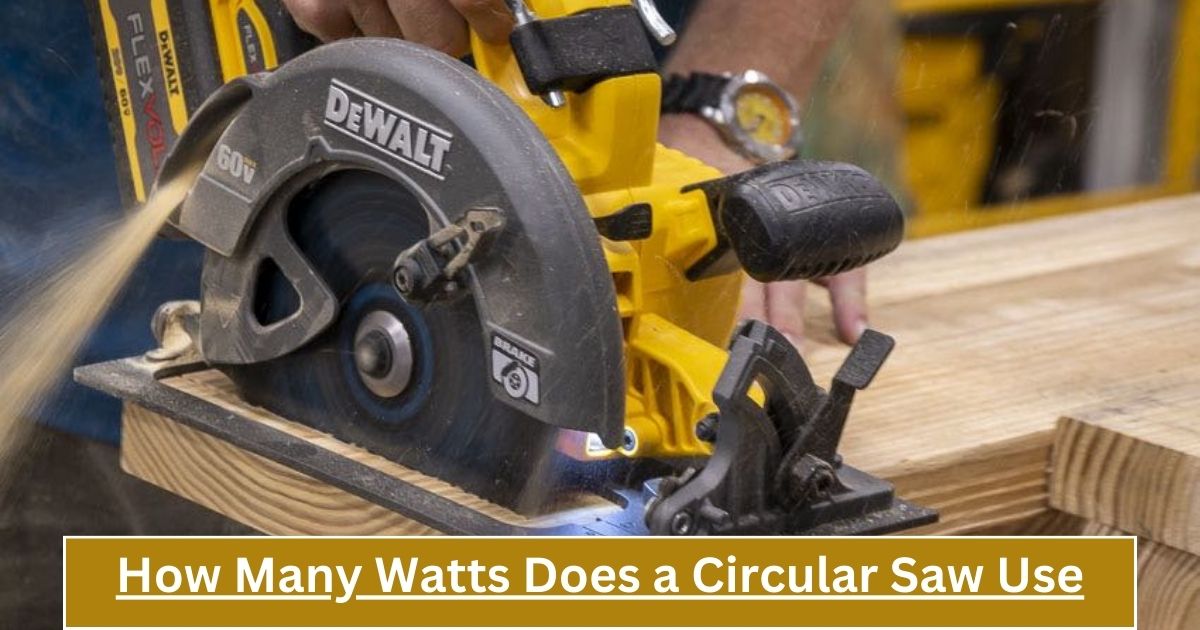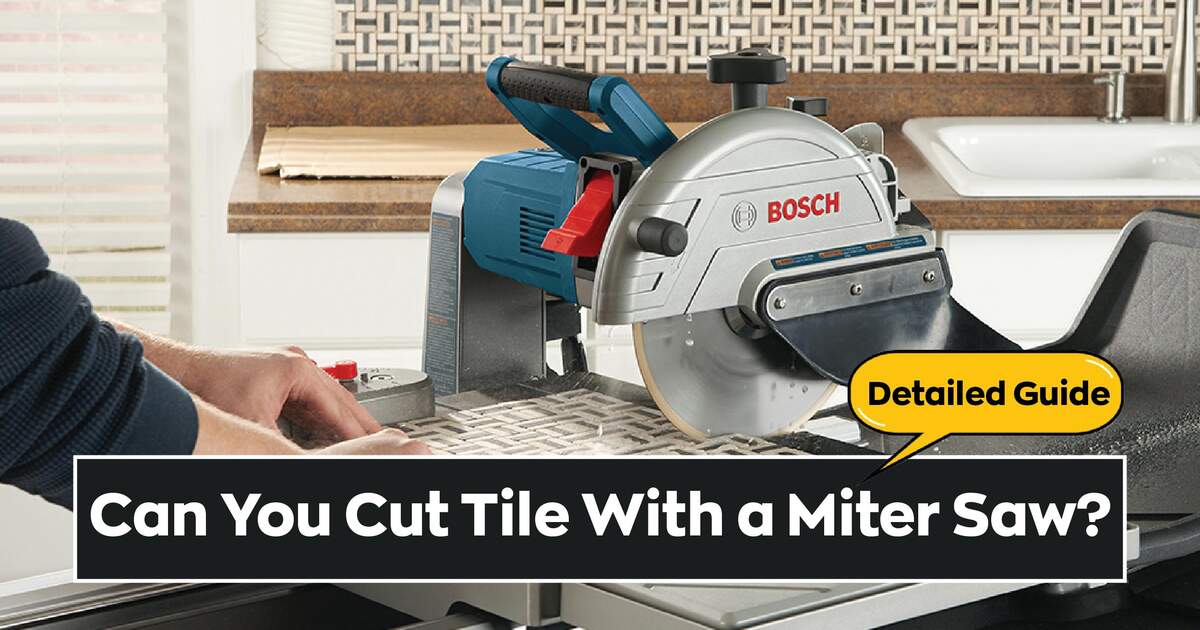Before attempting to cut metal using a miter saw, there are some things you should be aware of and actions you should take.
Will a miter saw be harmed by cutting metal? Yes, it can if the proper measures are not taken. A miter saw should be able to cut through small pieces of metal without too much difficulty even without any improvements. Thin aluminum sheets, for example, might not be a major concern, but if you try to cut through larger portions, things will get tricky.
The last thing you want to do is ruin your miter saw because you assumed it would effortlessly cut through metal. People spend a lot of money on their instruments.
There are things you can do to make metal cutting on your miter easier and maintain it in better shape for longer if you don’t want to buy something like a metal cutting saw. You might be asking yourself can I cut metal with a miter saw? Here’s what you need to know about it.
Can I cut metal with a miter saw?
A miter saw can cut metal, but the blade you use is very important. A miter saw accurately cuts wood with bevels and miters. If you frequently need to cut down metal, a chop saw is a better option. Otherwise, it’s not the best option.
The recommended shop tool for cutting metal is a chop saw, despite being more expensive and less flexible than a miter saw. These strong saws often cut through various ferrous and non-ferrous metals using abrasive metal discs, which are typically 12–15 inches broad.
Because it runs at a lower RPM, usually at least half that of a miter saw, a chop saw is the best option for cutting metal. The heat generated during the cutting of metal rises rapidly with cutting speed. By increasing the friction, the metal may expand, causing the blade to bind and possibly harm the tool or the metal piece.
The exposed engine housing, which is not shielded from metal fragments, is the miter saw’s other drawback. Swarf, the tiny metal fragments, can enter the saw and harm its parts. A saw with a greater RPM is also more likely to produce sparks in addition to small metal fragments.
Which Saw Is Best for Metal Cutting?
First off, cutting metal with a miter saw isn’t suggested. You could be tempted to only use it once or occasionally, but that will quickly lead to a broken tool.
If you have the money, getting a metal cutting saw like a chop saw is the finest thing you can do. The lower RPM of your chop saw is great for cutting through metals. A miter saw spins more quickly to cut through wood, but if it is used to cut through metals, all that speed could cause problems.
DeWalt, Evolution Power Tools, Makita, and other well-known tool manufacturers all make metal cutting saws that will work. A circular metal cutting saw is a strong instrument that can easily cut through several sheets at once.
Safety is less of a problem because a competent metal cutting saw will also reduce the amount of sparks produced during cutting.
Put a Metal Cutting Blade on Your Miter Saw:
Fortunately, most miter saws may use metal cutting blades if you’re on a small budget. They are a wonderful tool update that won’t break the bank and will help you cut through metal with less wear and tear. For people who desire to cut metal, this should be a very minimal step.
If you plan to use the instrument frequently, you should think about factors like the saw’s RPM, its power, and whether it is the ideal choice for the task at hand.
Online pricing for metal cutting blades vary, or you can visit your neighborhood hardware or tool store and ask a staff member which metal cutting blade is ideal for the brand and model of saw you have.
Can You Use a Wood Chop Saw with a Metal Cutting Blade?
Like metal cutting blades for miter saws, there are metal cutting blades for wood chop saws as well. Once more, the difficulty in using your chop saw will depend on the sort of metal you’re cutting, how frequently you do it, and how thick the pieces are.
A wood chop saw with a metal-cutting blade will work for the majority of tasks. However, when you progress beyond typical steel and aluminum cutting tasks, you could want a metal cutting saw specifically designed to handle the weight.
How to Use a Miter Saw to Cut Metal in 3 Easy Steps:
Using your miter saw is a possibility if your budget is limited or if you just occasionally need to cut metal.
Here are three steps you may take to prepare your saw for the task at hand and maintain the long-term safety of your tool.
Choose the Right Blade – Find a blade with a triple-chip grind or one that has been coated with a metal-cutting-appropriate coating. A blade used to cut metal often has smaller teeth than a blade used to cut wood. A metal-cutting blade has extra teeth as well.
Think about Gear Reduction Options – The majority of miter saws don’t come with motors that can be set to a specific speed. Their all-purpose RPM speeds aren’t always appropriate for cutting metal. One option is to get a motor that can be adjusted, allowing you to lower the RPMs to a level that is better for metal cutting.
Lower Voltage – If possible, you can also reduce the voltage that your miter saw is receiving in order to manually reduce the RPMs. The speed of the miter saw will decrease if less power is being fed into the machine. You can achieve this by utilizing a transformer, which lowers the voltage coming from your wall.
Your saw’s speed can be significantly reduced by lowering the voltage. However, in some cases, too much voltage reduction can prevent the saw from operating. Dialing in this stage takes some time until you discover the ideal voltage to protect your instrument and efficiently cut metal.
What to Take into Account When Using a Miter Saw to Cut Metal:
The occasional metal-cutting project can be started once you have the blade that is rated for your miter saw speed and the material you are working with. Using an imperfect tool like a miter saw when cutting metal can raise hazards. The following advice can help you stay safe when cutting metal:
- To protect yourself from flying sparks, metal chips, shards, and sharp metal edges put on the appropriate eye protection, ear protection, and heavy-duty gloves.
- Make sure the cutting surface is clear, and the guard and blade are stable and in good shape.
- Using a clamp, secure the saw and the material you are cutting.
- Cover the motor casing’s intakes, filters, and other holes with a cloth to shield them from flying metal fragments.
- To hold thin-walled or tubular metal, stop the blade from grabbing and warping, and stop fragments from flying, use a wood backer.
- To lessen blade wear, lubricate it.
- Before handling freshly cut metal, let it cool.
Any new saw blade must be used according to the manufacturer’s instructions for safe operation. Always accelerate the blade fully before bringing it to rest. Allow the blade to do the work as you slowly but firmly press it through the metal. Before raising the disc, turn the machine off and wait for it to stop.
What Kind of Blade Do I Need for a Miter Saw to Cut Metal?
When the wrong blade is used for the task, there is a higher chance that you may encounter several issues.
Here are some things to consider while purchasing a blade:
- Blades made of aluminum oxide are a standard for cutting metal because of their heat resistance and endurance. These are typical of abrasive discs as well.
- Diamond Blades: The fine edge of these blades is coated with artificial diamond particles. All of these diamond blades have “ferrous metal” certification. This indicates that these metals have a significant quantity of iron, which makes them more difficult to cut. These blades can be purchased for between $12 and $40 at hardware and home stores.
- Carbide Blades: Like diamond blades, carbide blades are very durable and have a long lifespan. Additionally, any blade from a respectable brand that specifically states that it can cut metal should perform admirably. It never hurts to get advice from the specialist at your neighborhood hardware store.
Teeth per Inch (TPI):
The teeth per inch, or TPI, of these blades, is another important feature.
The more teeth per inch, the more precisely the cuts will be made, but this also requires the blade to move more slowly, making it unsuitable for quick work. Depending on how thick the metal is, you should use a TPI of 8 to 24 to cut through it.
Before making a poor purchase, it is always a good idea to talk to the hardware store expert.
Is it easier to cut some metals than others?
Different types of metals should be taken into account for this job. The thickness will be vital, but given that the saw cuts gradually, it won’t be as crucial as other factors. We’re not attempting to chop it off with a machete.
The type of metal will have a significant impact on the result. No problem if you must slice tin for some reason.
That is a very soft metal, however, it won’t behave the same way when compared to certain typical hard metals like steel, tungsten, or cobalt. These metals will require a different sort of blade and will take longer to cut through.
It will be exceedingly challenging to cut metal like aluminum, which is widespread among building materials unless you’re only cutting thin sheets. You’ll need a blade designed for cutting non-ferrous metals because this is a “non-ferrous” metal, like this one (Amazon Affiliate Link).
Various other non-ferrous metals are:
- Brass
- Copper
- Lead
- Tin
Bottom Line:
Purchasing a pricey chop saw for a single metal-cutting activity is rarely necessary. Your flexible miter saw can handle light cuts with a diamond or carbide-tipped blade, however, it isn’t the best instrument for routine use.
Although it shouldn’t be your go-to tool for cutting metal, if you use these suggestions and carefully select the right blade for your machine, you shouldn’t have any trouble achieving the precise cuts you require to advance your project.
I hope after reading this article you won’t be asking yourself if you can cut metal with a miter saw.
FAQs:
What is teeth per inch or TPI?
The more teeth per inch, the more precisely the cuts will be made, but this also requires the blade to move more slowly, making it unsuitable for quick work. Depending on how thick the metal is, you should use a TPI of 8 to 24 to cut through it.
Before making a poor purchase, it is always a good idea to talk to the hardware store expert.
Can I cut metal with a miter saw?
A miter saw can cut metal, but the blade you use is very important. A miter saw accurately cuts wood with bevels and miters. If you frequently need to cut down metal, a chop saw is a better option. Otherwise, it’s not the best option.
Related Posts:






